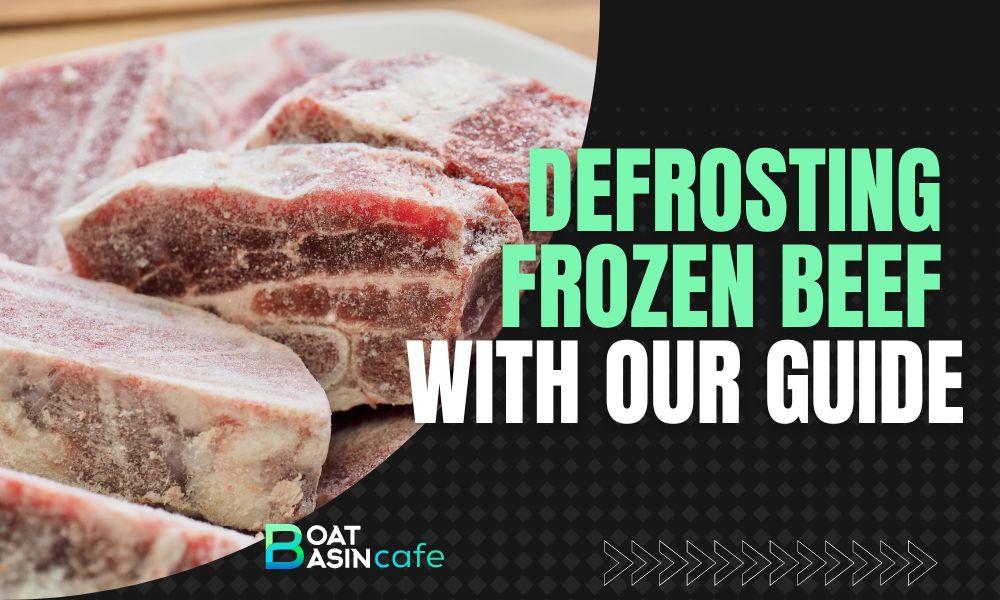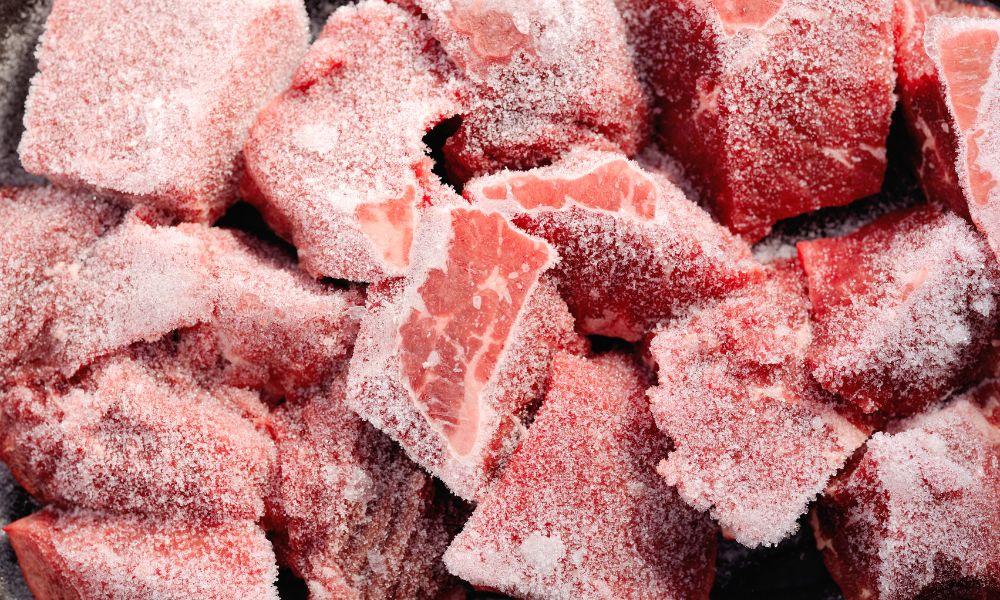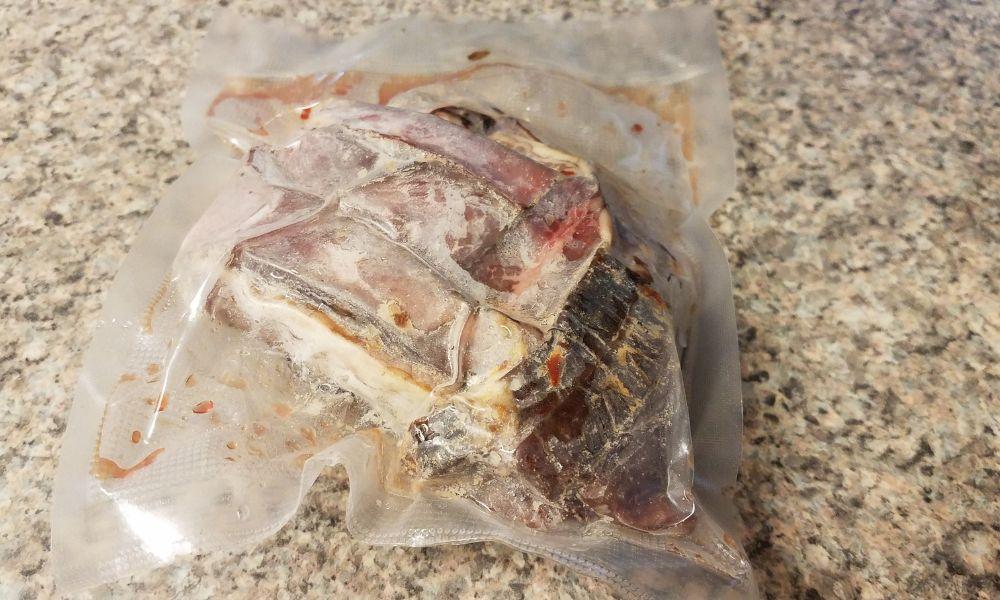Who doesn’t love a delicious beef dish? But before you dive into cooking your favorite steak or roast, the first hurdle is to defrost that beautiful chunk of beef. The secret to a scrumptious beef meal lies in mastering the art of defrosting frozen beef. And guess what?
We’ve got you covered. Our comprehensive guide will break down the best techniques, tips, and safety precautions to help you lead the way to a flavorful dish that will leave your taste buds dancing.

Why Properly Defrosting Frozen Beef Matters
The impact of defrosting on meat quality
Defrosting has a significant influence on the flavor, texture, and juiciness of your beef dishes. Thawing your beef improperly might lead to a meal that lacks taste or turns out tough and chewy. To ensure a tender and delicious result, it’s essential to follow the proper thawing techniques for frozen beef.
Food safety considerations
Safety should always be a top priority in the kitchen. Inappropriate defrosting can result in the growth of harmful bacteria, leading to foodborne illnesses. Unsafe thawing can also affect the beef’s quality, making it prone to contamination. Maintaining the safe defrosting methods discussed in this guide will significantly decrease the risk of foodborne illness.
Avoiding bacteria growth and contamination
When defrosting beef, we must prevent bacterial growth to ensure a delicious and safe meal. Bacteria thrive in warm temperatures, and poor defrosting practices can result in a breeding ground for harmful pathogens. By following proper beef thawing techniques, you can significantly reduce the chances of bacterial growth and infection.
Retaining flavor and texture
The goal is to defrost your beef while preserving its freshness, flavor, and texture. Using inadequate procedures may lead to compromised taste, resulting in a disappointing dish. Employing appropriate thawing tips can make all the difference for an extraordinary meal.
Safe Methods for Defrosting Beef

Thawing in the refrigerator
Here is our step-by-step process for thawing frozen beef in the fridge:
- Remove the beef from the freezer and keep it in its original packaging.
- Place the beef on a plate or tray to catch any drippings.
- Store the beef on the lowest shelf of the refrigerator to prevent cross-contamination.
- Allow ample time for defrosting; the time needed varies depending on the beef cut size (see below for estimated defrosting times).
Time required for different cuts of beef:
- Ground beef: 4-5 hours per pound.
- Small steaks and chops: 12-14 hours per pound.
- Large cuts and roasts: Allow 24 hours for every 5 pounds.
Benefits of this method:
- It is the safest way to defrost frozen beef.
- Allows for even defrosting, preserving the beef’s flavor and texture.
- Minimizes the risk of bacterial growth, ensuring a healthy meal.
Defrosting in cold water
Here’s how to use the cold water method while taking proper precautions:
- Remove the beef from its original packaging.
- Place the beef in a waterproof, leak-proof plastic bag.
- Fill a large container with cold tap water and submerge the bagged beef.
- Make sure the beef remains fully submerged by weighing it down with a heavy object, such as a plate or canned goods.
- Change the water every 30 minutes to maintain a cold temperature.
- Thaw the beef based on its weight (see the next section for time estimation).
Time estimation based on weight:
- For every pound of beef, allow about 30 minutes of defrosting time.
When to use this method:
- The cold water method is ideal when you need to defrost beef quickly.
- Suitable when you forgot to thaw beef beforehand and are pressed for time.
Using the microwave for quick defrosting
Microwaving beef can be a convenient and speedy option but requires attentiveness to prevent partial cooking. Here are the guidelines for microwave defrosting:
- Remove the beef from its original packaging.
- Place the beef on a microwave-safe plate or dish.
- Ensure your microwave has a special defrost setting or use 50% power.
- Defrost the beef based on its weight, referring to your microwave’s user manual for specific instructions.
- Pause and rotate or flip the beef at regular intervals for even defrosting.
Safety precautions when using a microwave:
- Never defrost beef longer than necessary to avoid partial cooking.
- Cook defrosted beef immediately to minimize the risk of bacterial growth.
Suitable scenarios for microwave defrosting:
- When you need to defrost frozen beef in the shortest time possible.
- Ideal for last-minute meal preparations.
Best Practices and Tips for Defrosting Beef

Planning ahead for defrosting
When it comes to the kitchen, planning is crucial – especially when it comes to thawing. Factors to consider before defrosting include the size and cut of the beef, as well as your planned cooking method. Accounting for the required defrosting times and your planned meal can make a delicious difference.
Handling and storage during defrosting
Proper hygiene should always be observed when handling and storing defrosted (and all) food items. Implement safe meat thawing practices, including washing hands and surfaces often, using separate cutting boards for raw meat, and avoiding cross-contamination. Always ensure the defrosted beef is stored securely and separately from other items in the fridge or freezer.
Techniques for quick defrosting
In a pinch for time? Try some of these quick thawing techniques and tips:
- Slice the beef into thin portions before freezing, which will shorten the thawing time.
- Use an airtight container to store beef while thawing to minimize the risk of contamination.
- Follow the microwave or cold water thawing methods for a faster means of defrosting.
Defrosting large cuts of beef
Got a hefty roast or a sizable steak to defrost? Special considerations should be taken when defrosting large cuts of meat. Refrigerator thawing is highly recommended for larger beef cuts, as it allows for gradual and even defrosting while minimizing bacterial risks. Be sure to allow for ample fridge time – 24 hours for every 5 pounds of beef – in advance for perfect, tender results.
For extra guidance on defrosting a wide variety of beef-based dishes, we’ve also compiled an informative defrost frozen meat guide. Additionally, peruse our helpful resources on the individual thawing methods for ingredients such as ground beef, tacos, and prawns:
- How long does ground beef last?
- How much ground beef per person for tacos?
- Defrosting frozen cooked prawns
FAQs
What are the safest and best methods for defrosting beef?
The three safest methods for defrosting frozen beef are thawing in the refrigerator, using cold water, and microwave defrosting. Each of these methods preserves the quality of the beef while minimizing the risk of bacterial growth.
How can I defrost my beef quickly without jeopardizing its quality?
Cold water thawing and microwave defrosting are the quickest ways to defrost beef while maintaining its quality. However, be sure to follow the recommended guidelines for these methods to prevent partial cooking and bacterial growth.
What should I avoid when defrosting my beef?
Avoid thawing your beef at room temperature, such as on the countertop, since this promotes bacterial growth. Also, refrain from using hot water for defrosting, as it could lead to uneven thawing and a temperature range conducive to bacteria.
How long can I store my defrosted beef in the fridge?
Defrosted beef can be safely stored in the refrigerator for up to 3-5 days before cooking, as long as it has been thawed using proper techniques and well-covered to prevent cross-contamination.
If I didn’t use all of my defrosted beef, can I refreeze the leftovers?
Although refreezing defrosted beef is generally discouraged due to the negative impact on flavor and texture, you can refreeze leftover beef if necessary. Refreezing is safer if the beef was thawed using the refrigerator method and should be done within 3-5 days.
How important are hygiene practices and cross-contamination prevention when defrosting beef?
Proper hygiene practices and preventing cross-contamination are crucial when defrosting beef to minimize the risk of foodborne illnesses. Always wash your hands, utensils, and surfaces before and after handling beef, and store defrosted beef in a secure container or on the lowest shelf in the fridge to avoid contamination.
Conclusion
By now, you should be well-equipped to tackle the task of defrosting frozen beef like a pro. With our expert guidance, you’ll be able to unlock the full potential of your beef dishes while ensuring your meals are safe and delectable. Now it’s time to put this newfound knowledge to the test – get ready to impress yourself and your loved ones with your defrosting prowess and mouthwatering beef meals. Happy defrosting and even happier cooking!
References:
- USDA Food Safety and Inspection Service. (2021). The Big Thaw – Safe Defrosting Methods. Retrieved from https://www.fsis.usda.gov/food-safety/safe-food-handling-and-preparation/food-safety-basics/big-thaw-safe-defrosting-methods
- USDA Food Safety and Inspection Service. (2013). Freezing and Food Safety. Retrieved from https://www.fsis.usda.gov/food-safety/safe-food-handling-and-preparation/freezing/freezing-and-food-safety
- Centers for Disease Control and Prevention. (2020). Follow Basic Food Safety Tips for Cookouts. Retrieved from https://www.cdc.gov/media/pressrel/2007/r070529.htm
- Boatbasincafe. The Complete Guide to Defrosting Frozen Meat Safely. Retrieved from https://boatbasincafe.com/defrost-frozen-meat/








